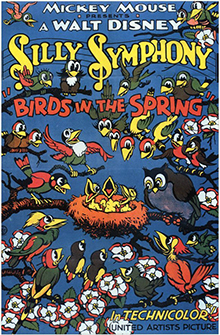Plot
Various birds are seen building nests and caring for eggs. One pair anxiously awaits the hatching of three eggs, then joyfully summon all the other birds to see their new hatchlings. Time jumps forward to when the hatchlings are fully fledged, learning to sing and fly. One becomes lost and explores the ground, encountering grasshoppers, humming birds and then a rattlesnake that attempts to eat the baby bird. The bird manages to lead the snake into tying itself into a knot, but the chick takes shelter in a hornet's nest. The parents rescue it from the angry hornets, and the film ends with the father bird spanking the chick.
Reception
On March 21, 1933, The Film Daily said: "One of the niftiest little numbers of its kind to come along. Workmanship is the height of color cartoon art, and the idea in back of the action is both clever and highly amusing. It shows birds nesting in the spring, with the mother eventually hatching a trio of youngsters, who are then taught to sing, fly, etc. For kids or grownups, it's a pip." [2]
This page is based on this
Wikipedia article Text is available under the
CC BY-SA 4.0 license; additional terms may apply.
Images, videos and audio are available under their respective licenses.
